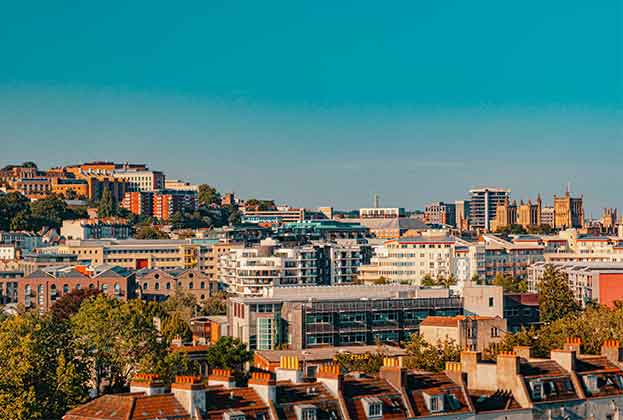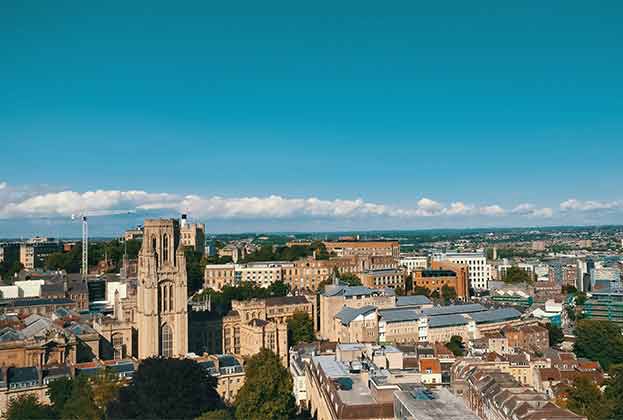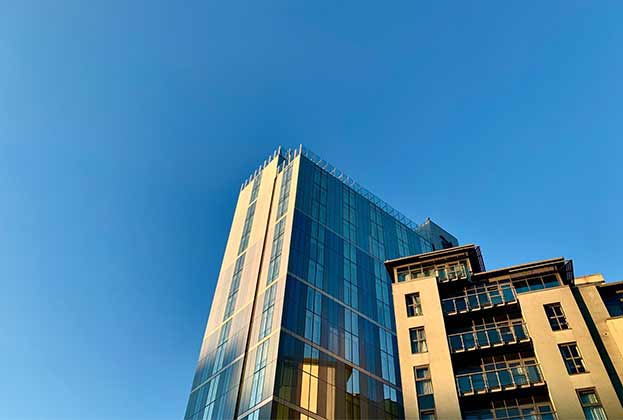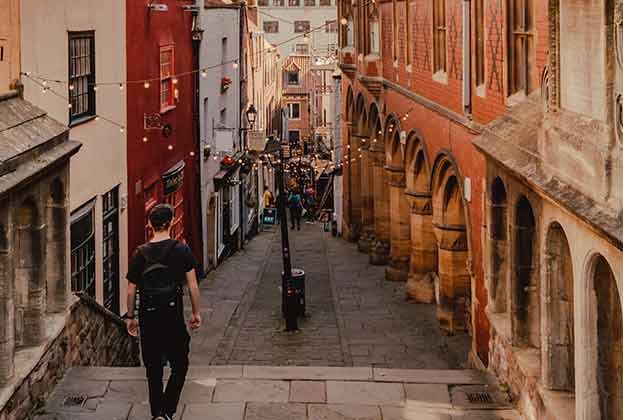In a year of two halves, Bristol’s local buyer interest and strong national appeal means the residential market remains buoyant
The residential market in Bristol is the busiest it has been in years, despite the ongoing pandemic looming in the background. Towards the end of summer this year, agreed sales were over 50% higher than they were at the same time in 2019. New instructions have similarly remained high through to October, with sellers keen to make the most of such an active market.
How badly has Covid-19 really hit sentiment? The national lockdown in spring saw a notable slowdown in buyers and sellers across Bristol, with sales agreed in April just 20% of what they were the previous year. This was particularly stark when measured against strong activity in Q1, which continued rapidly in the face of developing news about the oncoming pandemic.
There are several reasons the market has rebounded to such an extent. The start of the year was already remarkably busy, reflected in a stronger sense of confidence as the market began to open up in summer. Nationwide restrictions meant that fewer people were travelling abroad, which allowed momentum to continue throughout the summer.
On top of remarkable buyer sentiment and a greater pool of buyers through the seasons, the government introduced further measures to help keep the market moving. The stamp duty holiday put an impetus on buying and selling quickly to beat the holiday’s end on 31 March 2021. The Coronavirus Job Retention Scheme meant a reduced loss of wages and helped buyer sentiment to remain steady.
.jpg)
Clifton Wood, Bristol
City limits
Which areas have enjoyed the greatest success in this year of two halves? Suburban locations outside of Bristol city limits have seen some of the strongest activity. We have observed this across all markets, from areas with average values below £200,000 to the south of Bedminster to those over £500,000 to the north-west of Redland and beyond.
Bristol possesses a strong national appeal, with 24% of buyers coming from over 50km away
Savills Research
Part of that success can be ascribed to Bristol’s appeal both locally and nationally. Over 60% of those moving to Bristol come from within the local authority and over 67% come from within 10km, higher than the average proportion of movers across England and Wales. There are a small proportion of those managing to travel over 10km while staying within City of Bristol local authority. The furthest one could travel within the local authority is just over 17km, from the coast of Avonmouth to the fields of Stockwood.
But the market is not just supported by local interest, and Bristol possesses a strong national appeal, with 24% of buyers coming from over 50km away. This is noteworthy, considering the average buyer of a second-hand property typically travels just 5.1km. However, there may be somewhat of a misconception that London is buying up the city, with only 1 in 20 buyers coming in from the capital.
Slow progress
With buoyant market sentiment, government support and national appeal, there should be very little to slow momentum in Bristol’s housing market in the short term. However, the absence of key players in the transaction process means contracts are taking longer to exchange. Many conveyancers and surveyors have been furloughed, delaying mortgage valuations and conveyancing.
Increasing delays will have a negative impact on buyer sentiment. As completion dates move further away, buyers may question whether they’ll benefit from the stamp duty holiday before it ends in March 2021. This pressure may encourage some prospective buyers to push forward without fully scoping out their purchase.
View all of our latest Bristol Cross Sector research here.
Read the articles within Spotlight: Building for Bristol below.
.jpg)



